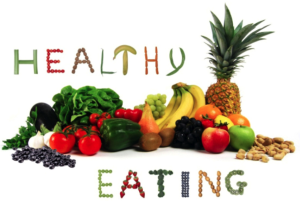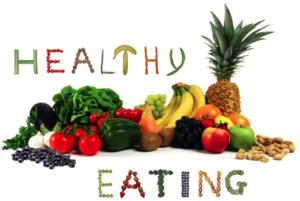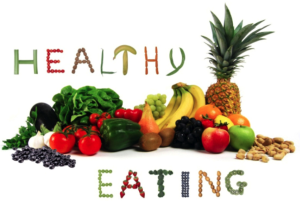Sugar Identified as a Top Cause of the Surge in Cancer
By Elaine Charles, part 4 in my series on healthy eating
According to the Credit Suisse Research Institute’s 2013 study “Sugar: Consumption at a Crossroads,” as much as 40 percent of US healthcare expenditures are for diseases directly related to the over-consumption of sugar.
Incredibly, we spend more than $1 trillion each year fighting the damaging health effects of sugar, which runs the gamut from obesity and diabetes, to heart disease and cancer.
The fact that sugar and obesity are linked to an increased risk of cancer is now becoming well-recognized. According to a report on the global cancer burden, published in 2014, obesity is responsible for an estimated 500,000 cancer cases worldwide each year.
Nearly two-thirds of obesity-related cancers — which include colon, rectum, ovary, and womb cancers — occur in North America and Europe. A more recent British report estimates obesity may result in an additional 670,000 cancer cases in the UK alone over the next 20 years.
According to BBC News, the Cancer Research UK and the UK Health Forum report are calling for a ban on junk food ads aired before 9 pm to address out of control rise in obesity and obesity-related diseases.
How Excess Sugar and Obesity Promotes Cancer
One of the key mechanisms by which sugar promotes cancer and other chronic disease is through mitochondrial dysfunction.
Since sugar is not our ideal fuel, it burns dirty with far more reactive oxygen species than fat, which generates far more free radicals which in turn causes mitochondrial and nuclear DNA damage along with cell membrane and protein impairment.
Research has also shown that chronic overeating in general has a similar effect. Most people who overeat also tend to eat a lot of sugar-laden foods — a double-whammy in terms of cancer risk.
Chronic overeating places stress on the endoplasmic reticulum (ER), the membranous network found inside the mitochondria of your cells. When the ER receives more nutrients than it can process, it signals the cell to dampen the sensitivity of the insulin receptors on the surface of the cell.
Thus continuously eating more than your body really needs promotes insulin resistance by the mere fact that your cells are stressed by the work placed on them by the excess nutrients. Insulin resistance in turn is at the heart of most chronic disease, including cancer.
High-Fructose Corn Syrup Primary Culprit in Cancer
This also helps explain why intermittent fasting (as well as other forms of calorie restriction) is so effective for reversing insulin resistance, reducing your risk of cancer, and increasing longevity.
Obesity, caused by a combination of eating too much refined fructose/sugar and rarely if ever fasting, may also promote cancer via other mechanisms, including chronic inflammation and elevated production of certain hormones, such as estrogen, which is associated with an increased risk for breast cancer.
According to recent research, from the University of Texas MD Anderson Cancer Center, refined sugar not only significantly increases your risk of breast cancer, it also raises your risk of tumors spreading to other organs.
Moreover, this study found that it was primarily the refined fructose in high-fructose corn syrup, found in most processed foods and beverages that was responsible for the breast tumors and the metastasis.
Without Sugar, Cancer Cannot Thrive
One of the most powerful strategies I know of to avoid and/or treat cancer is to starve the cancer cells by depriving them of their food source, which is primarily sugar and excessive protein.
Unlike all the other cells in your body, which can burn carbs or fat for fuel, cancer cells have lost that metabolic flexibility and can only thrive if there enough sugar present.
German cancer researcher Dr. Otto Warburg was actually given a Nobel Prize in 1931 for discovering this. Sadly very few experts have embraced his metabolic theory of cancer, but have embraced the nuclear genetic theory that is a downstream side effect of mitochondrial dysfunction.
Make no mistake about it, the FIRST thing you want to do if you want to avoid or treat cancer if you have insulin or leptin resistance (which 85 percent of people do) is to cut out all forms of sugar/fructose and grain carbs from your diet, in order to optimize the signaling pathways that contribute to malignant transformation.
Reduce Your Fructose and Non-Fiber Carb Intake
I recommend reducing your total fructose intake to a maximum of 25 grams/day, from all sources, including fruit. If you are insulin resistant, you’d do well to make your upper limit 15 grams/day.
Cancer patients would likely be best served by even stricter limits. For a more detailed discussion please review my interview with Professor Thomas Seyfried, who is one of the leading cancer pioneer researchers in promoting how to treat cancer nutritionally. I personally believe that most would benefit from reducing all non-fiber carbs (total carbs minus fiber), not just fructose, to less than 100 grams per day.
I typically keep mine around 50 to 60 grams every day.
The easiest way to dramatically cut down on your sugar and fructose consumption is to switch to REAL foods, as most of the added sugar you end up with comes from processed fare, not from adding a teaspoon of sugar to your tea or coffee. But there are other ways to cut down well. This includes:
- Cutting back on the amount of sugar you personally add to your food and drink
- Using stevia or luo han instead of sugar and/or artificial sweeteners.
- Using fresh fruit in lieu of canned fruit or sugar for meals or recipes calling for a bit of sweetness
- Using spices instead of sugar to add flavor to your meal
Signs of Progress, But Dietary Guidelines Are Still Flawed
The excess consumption of sugar in the U.S. can be directly traced to flawed dietary guidelines and misplaced agricultural subsidies. Progress is being made however, with the 2015 to 2020 U.S. dietary guidelines now recommending limiting your sugar intake to a maximum of 10 percent of your daily calories.
Unfortunately, the dietary guidelines still suggest limiting saturated fat to 10 percent of calories, which is likely far too low for most people. Tragically, it also makes no distinction between healthy saturated fats and decidedly unhealthy trans fats. Saturated fats are actually very important for optimal health, and those with insulin/leptin resistance may need upwards of 50 to 80 percent of their daily calories from healthy fat.
Trans fats, on the other hand, have no redeeming health value, and the evidence suggests there’s no safe limit for trans fats. Besides that glaring flaw, the conundrum with the new guidelines is that both sugar and fat should be limited to 10 percent each of daily calories.
This completely ignores the fact that as you cut out sugar (carbs), you need to replace that lost energy with something else, and that something else is healthy fat, such as that found in avocado, organic seeds and nuts, raw organic butter, cheese, and coconut oil, just to name a few.
They do get a number of things right though. In addition to the recommendation to limit sugar, the limits for dietary cholesterol have been removed, giving the thumbs up for eggs and other cholesterol-rich foods. They also note that most Americans need to reduce the amount of red meat consumed.
As I’ve discussed before, the risks of eating too much protein include an increased risk for cancer, as it can have a stimulating effect on the mTOR pathway, which plays an important role in many diseases, including cancer.
When you reduce protein to just what your body needs, mTOR remains inhibited, which helps minimize your chances of cancer growth. As a general rule, I recommend limiting your protein to one-half gram of protein per pound of lean body mass, which for most people amounts to 40 to 70 grams of protein a day.








